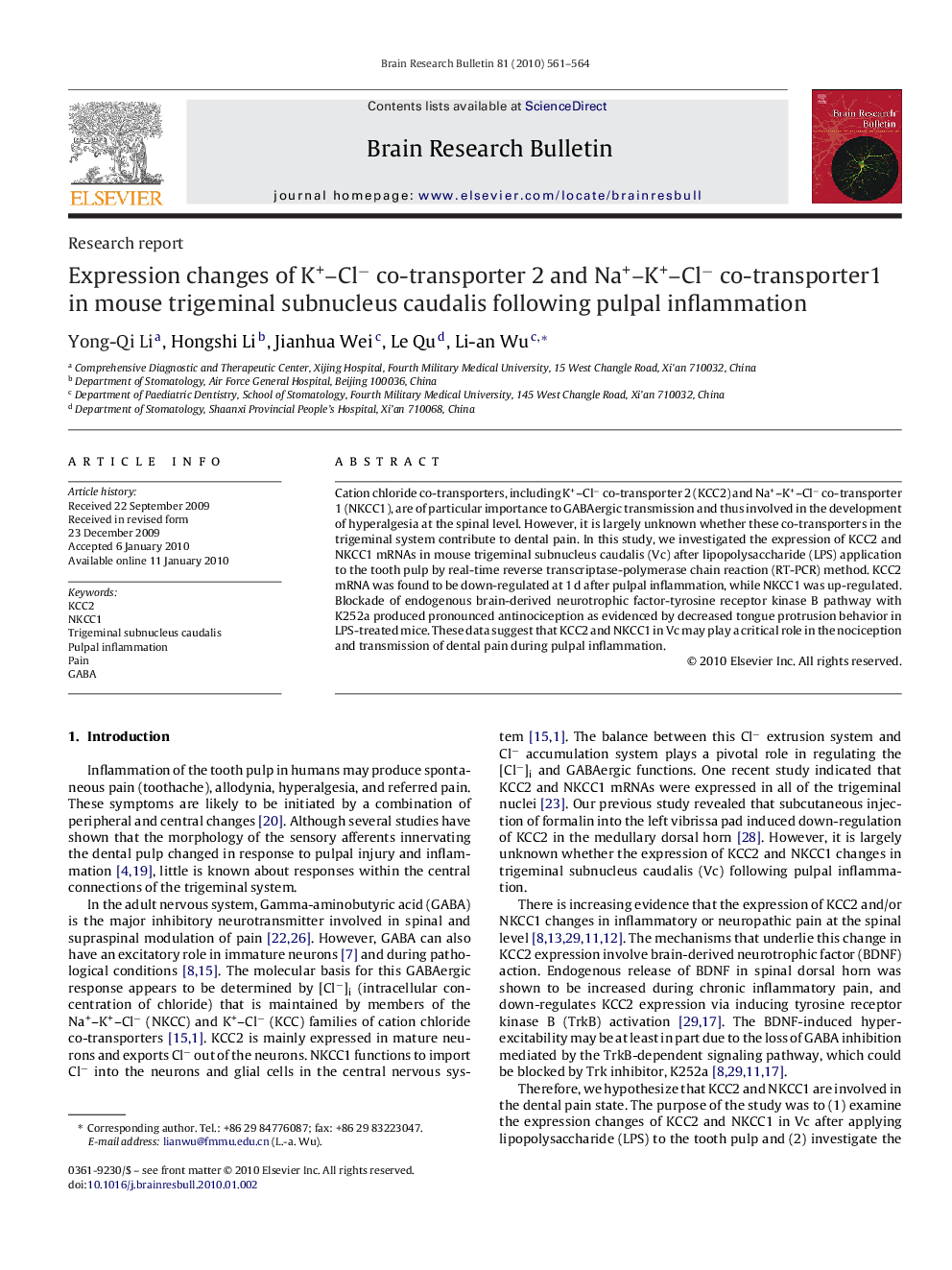| Article ID | Journal | Published Year | Pages | File Type |
|---|---|---|---|---|
| 4319406 | Brain Research Bulletin | 2010 | 4 Pages |
Cation chloride co-transporters, including K+–Cl− co-transporter 2 (KCC2) and Na+–K+–Cl− co-transporter 1 (NKCC1), are of particular importance to GABAergic transmission and thus involved in the development of hyperalgesia at the spinal level. However, it is largely unknown whether these co-transporters in the trigeminal system contribute to dental pain. In this study, we investigated the expression of KCC2 and NKCC1 mRNAs in mouse trigeminal subnucleus caudalis (Vc) after lipopolysaccharide (LPS) application to the tooth pulp by real-time reverse transcriptase-polymerase chain reaction (RT-PCR) method. KCC2 mRNA was found to be down-regulated at 1 d after pulpal inflammation, while NKCC1 was up-regulated. Blockade of endogenous brain-derived neurotrophic factor-tyrosine receptor kinase B pathway with K252a produced pronounced antinociception as evidenced by decreased tongue protrusion behavior in LPS-treated mice. These data suggest that KCC2 and NKCC1 in Vc may play a critical role in the nociception and transmission of dental pain during pulpal inflammation.
